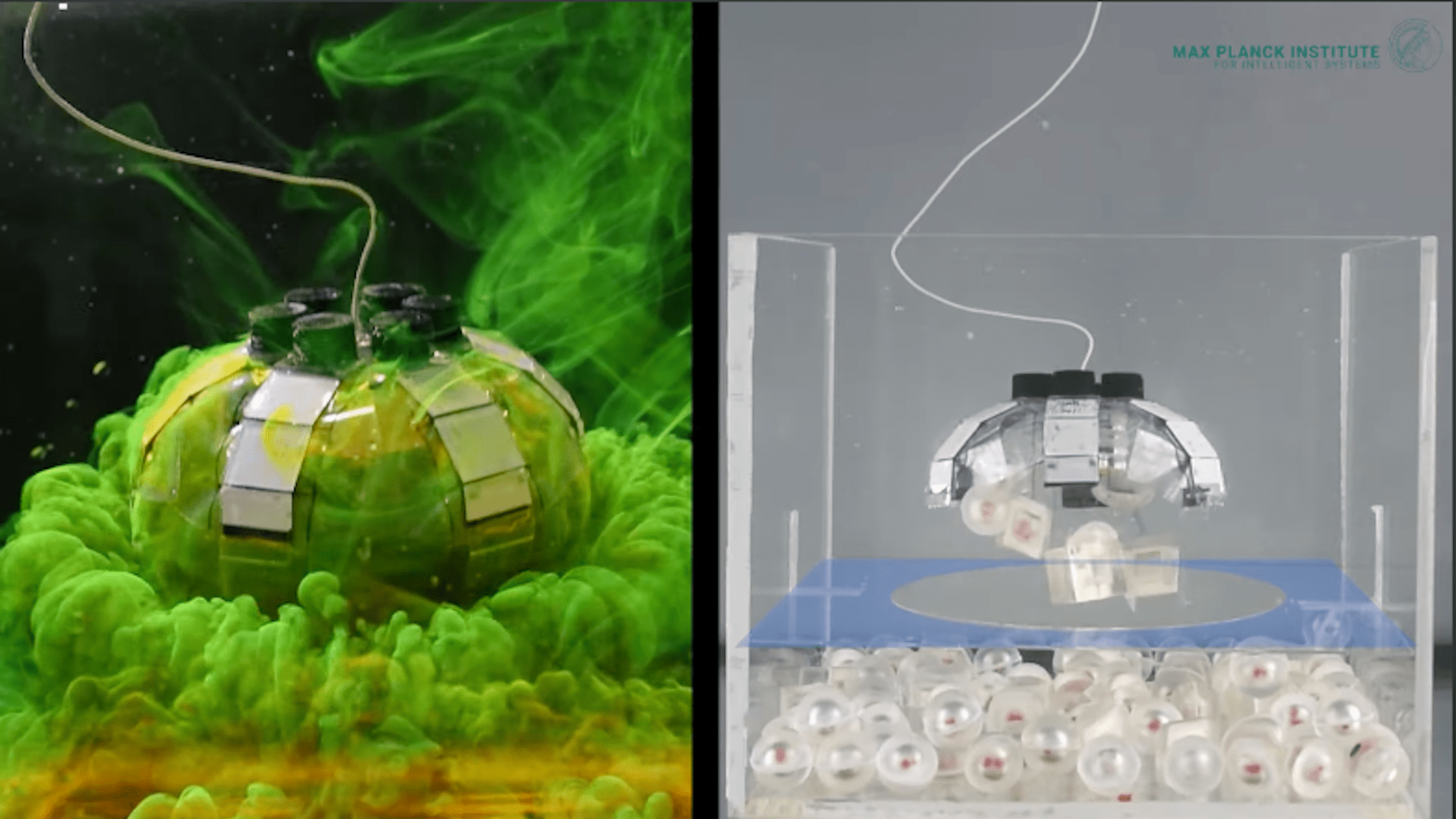

The oceans are inundated with plastic. Despite the numerous flashy proposed solutions, there unfortunately still isn’t any surefire way to clean it all up. One of the most buzzed about ideas—underwater vacuuming—has recently come up against intense scrutiny for its potential collateral damage to marine ecosystems and wildlife. Meanwhile, even the more delicate alternatives often hinge upon large, cumbersome surface skimmers. To tackle some of these issues, scientists at Germany’s Max Planck Institute for Intelligent Systems (MPI-IS) have created a robotic trash collector inspired by some of the oceans’ oldest and most resilient residents—jellyfish.
Recently detailed in the research journal Scientific Advances, the team’s “Jellyfish-Bot” already shows promise in helping cleanup the copious amounts of human-generated trash littering the planets’ aquatic environments. But unlike many other underwater cleaners, the prototype is incredibly small, energy-efficient, and nearly noiseless. Additionally, the hand-sized device doesn’t need to actually physically interact with its cleanup targets. Instead, the robot takes a cue from jellyfishes’ graceful movements via six limbs employing artificial muscles called hydraulically amplified self-healing electrostatic actuators, or HASELs.

As New Atlas explains, HASELs are ostensibly electrode-covered sacs filled with oils. When the electrodes receive a small current—in this case, about 100 mW—they become positively charged, then safely discharge the current into the negatively charged water around them. Alternating this current forces the oil in the sacs to move back and forth, thus making the actuators flap in a way that generates momentum to move trash particles upward. From there, humans or other gathering tools can scoop up the detritus.
“When a jellyfish swims upwards, it can trap objects along its path as it creates currents around its body,” study author and postdoc in the MPI-IS Physical Intelligence Department Tianlu Wang explained in a statement. “In this way, it can also collect nutrients.”
Wang went on to describe how their robot similarly circulates water around it. “This function is useful in collecting objects such as waste particles,” Wang adds. “It can then transport the litter to the surface, where it can later be recycled.”
[Related: Ocean plastic ‘vacuums’ are sucking up marine life along with trash.]
Apart from generating currents, the Jellyfish-Bots’ actuators could also be divided up into separate responsibilities. In the team’s demonstrations, the prototypes could use all six of its limbs for propulsion, or rely on two of them as claws to lightly grasp targets like an N95 face mask.
The biggest drawback at the moment is simply the fact that a controlled Jellyfish-Bot still requires a wired connection for power, thus hampering its scope. Although researchers have been able to incorporate battery and wireless communications modules into the robots, the untethered versions cannot currently be directed in a desired path. Still, it’s easy to envision future iterations of the Jellyfish-Bot clearing this relatively small hurdle. If that is accomplished, then fleets of the cute cleanup machines may soon be deployed as a safe, efficient, and environmentally harmless way to help tackle one of the environment’s most pressing threats.
